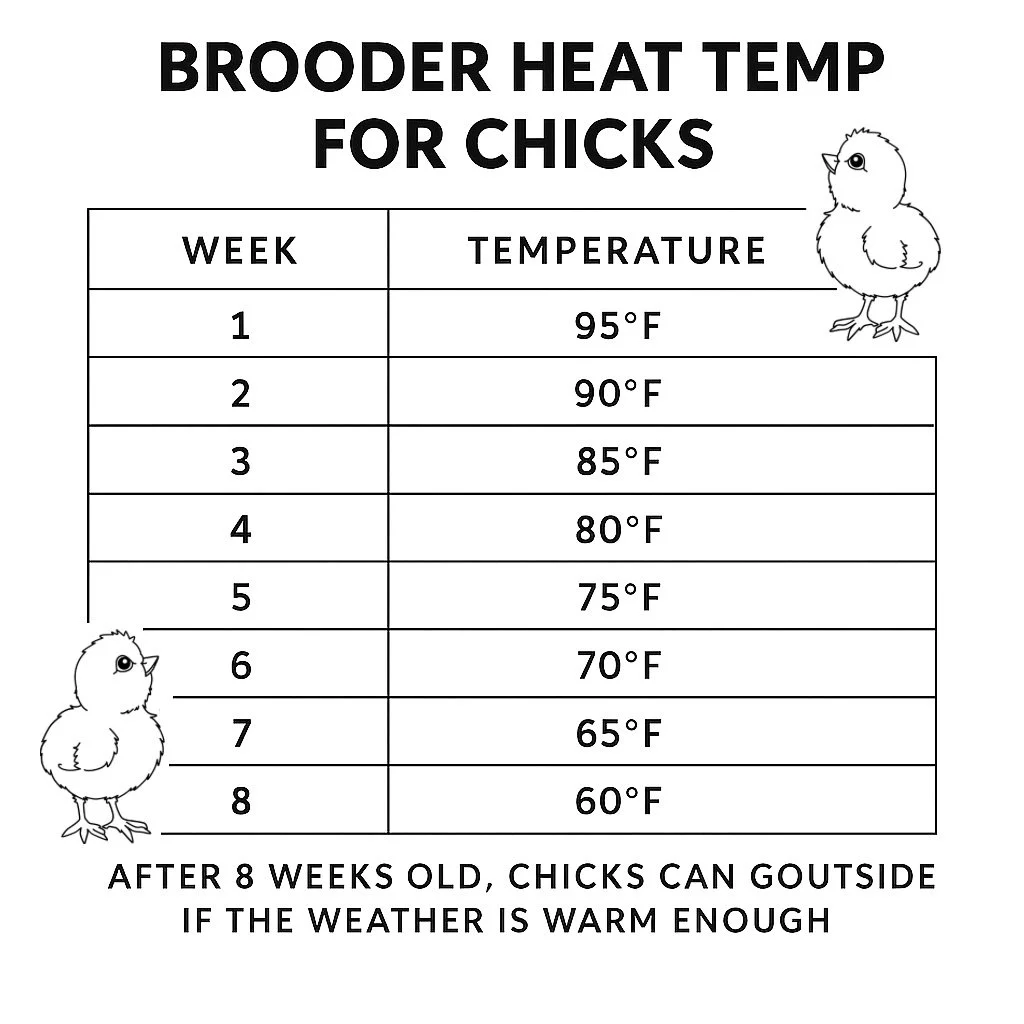What Came First? the Hen or the Egg?
Regardless of the answer, many people begin their chicken-keeping journey with chicks. Whether purchased from a farm store or directly from a breeder, baby chicks all have the same basic needs: warmth, food, and water.
Heat Sources: Skip the Lamp, Use a Plate
Personally, I’m against using heat lamps. I’ve read and seen too many fire horror stories. Instead, I prefer heat plates or brooders with built-in heat bulbs- and I actually use both. I start my chicks in a brooder with built-in bulbs and transition them to a larger brooder with a heat plate. This is simply my preference and may not be necessary if you’re only raising a small batch.
The only heat plate I’ve used is the one from Tractor Supply. I’m sure there are other good ones out there, but I can only speak from personal experience. If your heat plate has a flat top like mine, I recommend covering it with contact paper- chicks love to hop on top and poop!
Brooder Setup:
This is the brooder I use and love: https://amzn.to/407QHTL
I line the bottom with a puppy pad for easy cleaning.
Sometimes I add wood shavings on top, but not always.
It has built-in heat bulbs with a dial to adjust the temperature as chicks grow.
Other brooder options I’ve seen include large Rubbermaid bins, rabbit cages, dog kennels, or even old playpens. Just make sure your brooder provides:
Enough space for the chicks to grow
Protection from drafts
Easy access to food and water
Feeding and Watering:
If you bought your chicks, they should already know how to eat and drink. But if you hatch them yourself, you’ll need to dip their beaks in the water and show them the food. (Honestly, even store-bought chicks sometimes need a little help)
I prefer this waterer and feeder set : https://amzn.to/3TpShfX
Your chicks should be fed a non-medicated chick starter feed. I do not recommend medicated feed. Here’s why:
Most medicated feeds contain a coccidiostat that blocks the absorption of thiamine (Vitamin B1). This can lead to a thiamine deficiency, which may cause symptoms like Wry neck (head twisted to the side) and Stargazing (chicks looking straight up). Medicated feed is only a preventative for coccidiosis and it won’t treat an active infection.
Temperature: Reading the Chicks
As chicks grow, they need less heat.
If you’re using my favorite brooder with a temperature dial, you can gradually lower it over time. I like to place a thermometer inside so I can monitor the exact temperature. You can also read your chicks’ behavior:
Huddled together under the heat? They’re too cold.
Spread out and avoiding the heat? They’re too hot.
If using a heat plate, raise it as the chicks grow. I usually keep one side lower than the other so they can choose how close they want to be.
When Can They Go Outside?
Once your chicks are 6-8 weeks old and the outside temperature stays above 60F, they can start exploring the great outdoors! If you’re adding them to an existing flock:
Try placing them in a kennel inside your run so the older birds can see them without being able to peck.
Or, you can take the riskier route: sneak them in at night and hope your hens don’t notice.
Disclosure: As an Amazon Associate, I earn from qualifying purchases. This means I may receive a small commission at no extra cost to you if you purchase something through links on this page.

